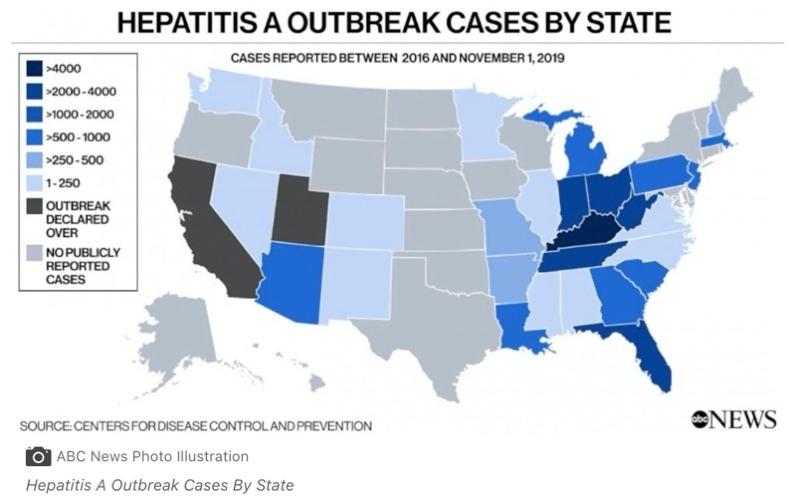In recent years, hepatitis A outbreaks have occurred from several different sources:
- Foodborne transmission through ingestion of contaminated food; and
- Person-to-person transmission through close contact with an infected person, most recently, among people who use drugs, people experiencing homelessness, and men who have sex with men.

While the average number of HAV infections reported to the CDC in recent years has declined substantially compared to 2000, fluctuations have occurred in the last 20 years due to large outbreaks. After a long downward trend, the first increase between 2012 and 2013 (1,562 and 1,781 reported cases, respectively) was due to a large multi-state outbreak associated with pomegranate arils imported from Turkey. Between 2015 and 2016, the reported cases again increased by 44.4% from 1,390 in 2015 to 2,007 cases in 2016. The 2016 increase was due to two hepatitis A outbreaks, each of which was linked to imported foods. Substantial increases in incident cases of hepatitis A occurred in 2017 and 2018 (3,366 and 12,474 reported cases, respectively) due to ongoing outbreaks reported to the CDC among people who use drugs and people experiencing homelessness, as well as outbreaks among men who have sex with men.